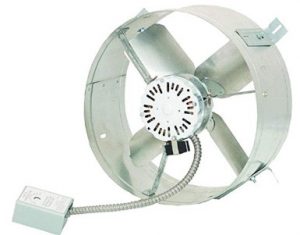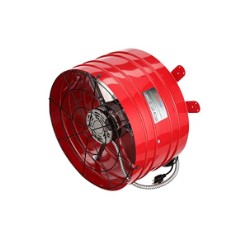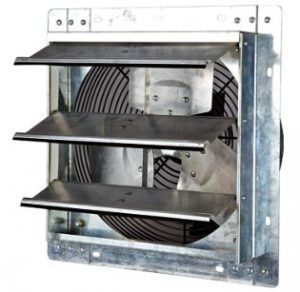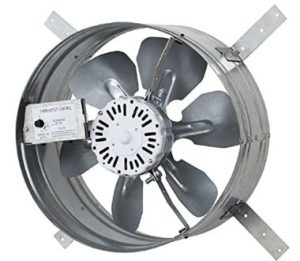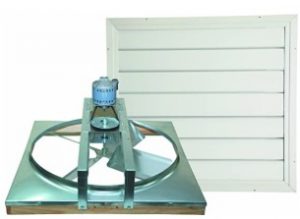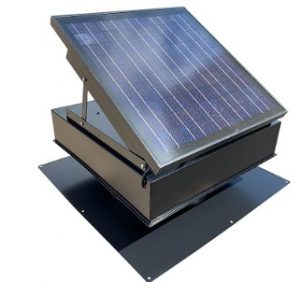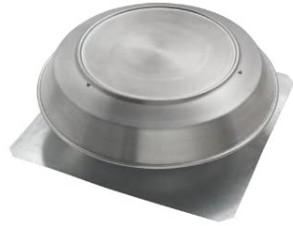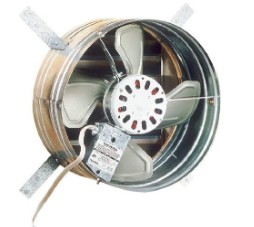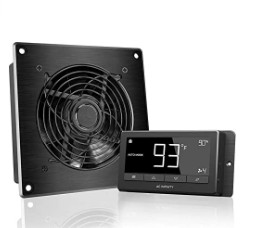An attic fan is an important machine for home ventilation, the larger the power it has, the more fresh air you can get. Getting the best attic fan is not enough, there are also using tips and other things concerning the maintenance and safety use on attic fans.
Keep reading and get all the basic knowledge you should know before buying the best attic fan!
What Is An Attic Fan?
This is a device that is used to draw hot, humid air pushing it out of your attic. This is much of help to your ventilation system as high temperatures can be lowered by this device, giving you an environment to enjoy.
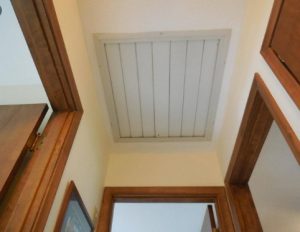
Types of Attic Fan
There are different types of attic fans; this is bout about by the material they are made of, working capacity, and what powers them to function.
1. non-mechanical attic fans
This is screened and with louvered vents located up on rooftops and is efficient at keeping the airspace of the attic cooler and are made up of metallic materials. They are mostly used in homes where there are other alternatives to cooling down the attic air.
2. Whole house attic fan
This mostly keeps dead spaces causing the room to be cooler throughout. Mainly they are used in mild environmental conditions, and they serve as an alternative to traditional air conditioners.
3. Solar attic fans
They are less powerful than electric attic fans. This solar fan creates more cooling airflow through the attic space, and they depend on solar energy to function.
4. Electric attic fans
They are the most powerful and efficient as they depend on the electrical power energy to function
How Does It Works?
The attic fan works in a straightforward principle whereby it pushes the hot air out of your room, at the same time pulling air from the outdoors to the attic by use of the soffit vents that are there in your eaves. The device vents hot air through the attached dormers, so it replaces the unwanted hot air with fresh air hence cooling the attic leaving the space below cold.
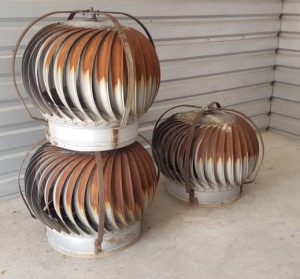
House Fan vs. An Attic Fan
Everyone knows that the best solar system will provide quiet operation, simple installation, and keep the attic temperature comfortable. However, to buy the correct ventilation system, you must search deeper. One thing to consider is to confuse this type of fan, as well as its purpose.
Many owners feel confused and think that the attic fan is the same as the home fan. However, the two are very different. While the purpose of a domestic fan is to maintain the interior temperature of the house according to the heat setting, the ventilation fan is only designed for the attic, providing ventilation, extracting hot air, and preventing moisture accumulation.
Can I Turn On It With AC?
Yes, you can operate the attic fan with air conditioning, but things change to solar energy. The main reason why attic solar fans are present in your home is a large number of benefits for the environment. You may ask, “How does a small product affect the environment?” This is the correct question.
A small product will not have a noticeable impact. Still, as part of a holistic approach to a home improvement or construction project, a single product can help you significantly reduce carbon emissions. Now, you can see how small solar attic fans can affect the environment.
How Long Are the Attic Fans?
The durability will depend on the materials. Materials and labor must also be taken into account when considering options for the attic fan. You want to design and manufacture high-quality metal equipment and fans with true professionals. For fans with sealed bearings and covers welded in place, you will not only enjoy a quieter operation, but this design feature also means less wear and, therefore, longer life.
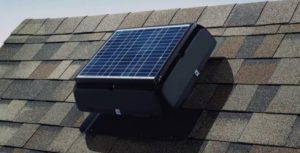
Do You Have An Attic Fan in Winter?
If you have not already installed an attic fan, it may be time to invest in a solar attic fan. The reason? During the cold winter months, heat trapped in the attic can melt snow on the roof of your home. When water flows down, it accumulates and freezes in eaves or cold gutters, blocking expensive and destructive ice. With a solar-powered attic fan, minimal sunlight is required to operate and keep the attic fresh.
Besides, the warm humidity of the shower and the kitchen tends to rise and fall in the attic. This leads to mold and fungus that can saturate its insulation and cause fungus breakdown, destruction of the roof frame, and cover. With a solar attic fan, the attic remains well ventilated and prevents it from rotting.
Can You Run It All Day?
With an electric fan in the attic, to save energy, it is usually equipped with a thermostat. The disadvantage of this is that by the time the ventilation begins, the house is already hot, so it will take a while to cool down. However, since the solar-powered attic fan does not use electricity, it can run all day, from sunrise to sunset. Therefore, air circulates continuously in your home, regardless of temperature, keeping your house cool and ventilated.
Should It Be Turned on All the Time?
You can power the attic fan all the time if you use solar energy. The solar fans are cheaper than operating an equivalent electric fan and can reduce your energy bill more than your electric counterparts. Here’s how. The attic solar and electric fans are equipped with a thermostat that turns on when the attic temperature reaches a set point. Attic solar fans stimulate at a lower temperature than most electric models.
Consequently, it will keep it cool in the summer and reduce the humidity level. Therefore, the fan runs on sunlight that reduces your energy bill and keeps your home cooler in summer, reducing your need for air conditioning. This, in turn, reduces your energy bill. The low energy bill seems to be a popular topic for solar attic fans.
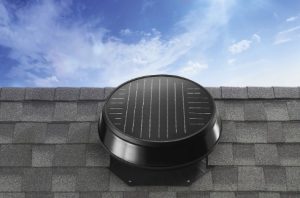
Does An Attic Fan Help With Cooling?
They can keep things fresh in the warmest room in the home. After all, the heat increases. Then the sunlight shines in your home and the temperature of all this additional heat in the attic increases. This makes moving furniture and other properties out of storage virtually unbearable if you don’t have a fan in the attic.
What You Should Know Before Buying Them?
You have to go for an attic fan if your house in the room needs sufficient ventilation. The following as some of the things to consider;
Venting capacity
When buying an attic fan, you should consider the ones with appropriate venting capacity to meet your needs, and this is determined by what source of power is going to be used i.e., is it electricity or solar.
Efficiency of operation
Other important factors you have to consider are; efficiency in its operation, look for one that has a high-efficiency rate.
Material
The quality of the materials used in making it is another thing to consider, go for one that is made from high-quality material that can last long an give you value for your money.
Warranty
The warranty of the manufacturer is an important factor to look for when choosing an attic fan, choose one that has a long warranty period
Prices
Price is another defining thing to consider, choose an attic fan with the best features and low price. Don’t compromise quality at the expense of saving money, make a good balance between prices and features
What is the Attic Fans Used For?
It doesn’t matter where you are living. The benefits of using an attic fan will help you live a comfortable, happy life. An attic fan is used for cooling your living place as it allows the outdoor cooler air to enter through an opening space and driving out hot attic air hence lowering the temperatures in the room.
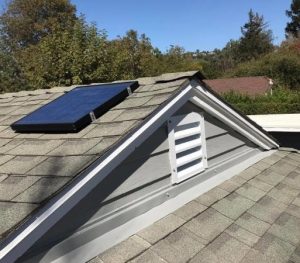
Difference Between Roof Mounted Fan and Gable Mounted Fans
The roof-mounted attic fan is one type that requires a vent hole at the top of the roof, and it is then put on a stable base situated over the vent hole. While the gable mounted attic fan is installed inside the house to help ventilate it. Mostly they decrease wear on materials hen decreasing the inside temperature.
How to Use Them?
Using it is very simple first you have to ensure that all your windows are open before turning it on. Ensure that every early morning or late in the evening, you turn your attic fan on to hot exhaust air in the house. The cold fresh outdoor air will enter through the open windows hence lowering the temperatures inside.
How Do Solar Fans Work?
An attic fan works by pushing out the hot attic air out of the attic and replacing it with the cold air outside. The fans give an efficient way to cool the attic hence cooling the whole house.
Reviews of Best Attic Fan
#1. Cool-Attic Ventilator Fan with Large Motor
Cool-Attic Ventilator is a solar-controlled attic fan with 36-watts power capacity. The fan is anything but difficult to install on the rooftop. It is appropriate for pitched shingle roofs with fiberglass black-top. The Ventilator can be mounted on 3/12 to 12/12 types of roofs. This attic fan is durable, making it hard to be blown away by the strongest of winds. The solar attic fan conceals to 2,625 square feet of the attic. It is made durable with quality materials. The fan requires no additional wires for installation.
- Solar-fueled
- Clear installation direct
- Drastic reduction in electricity bills
- Effectively ventilates the attic.
- Ideal long-term greenhouse investment
- It is excessively massive
#2. QuietCool AFG PRO Attic Gable Fan
Lessening cooling costs has shown signs of improvement with the QuietCool AFG PRO Fan. The fan comes with a 2-speed function to convey quiet execution. It comes with a screen to improve cooling temperature, particularly throughout the mid-year. The fan is appropriate for about 3,000 square feet on the off chance that you dwell in a story building.
- Easy to install
- Easy to understand instructional guide
- Reduction in electricity bills
- A bit noisy
- It is costly
#3. Living Variable Shutter Exhaust Fan
Keep humidity at the right level with the Iliving Variable Attic Fan. Aside from cooling your home environment during summer, this fan can be left to function adequately in any event, during winter similarly as there is sufficient sunlight coordinated to the solar board. This helps to prevent ice dams during winter. The fan is made of excellent construction. It is lightweight and quiet in operation.
You can include a temperature controller using a thermostat on the off chance that you want to do as such. The thermostat is sold separately. The fan works more diligently on radiant days. It exhausts heat from the attic quicker with a DC engine controlled by a 24-watt solar board. Its best piece is that the attic fan is anything but difficult to install and makes an incredible greenhouse investment over the long haul.
- Lightweight
- Easy installation
- Durable and long-lasting
- Great greenhouse investment
- No wiring is required.
- The thermostat and fire security switches are sold separately
#4. Iliving-ILG8G14-12T Ventilator Gable Mount Fan
This Iliving-ILG8G14-12T fan is a 25-watt attic fan with a 30-watt collapsing solar board using a 12-volt battery. The blades are durable and made with a high-quality aluminum combination. It pulls noticeable all around automatically at low voltage. This is a flexible fan that can be used both in the carport and attic.
The fan can successfully assist with decreasing the heap on your forced air system, and drops your electricity bills radically. The fan has many CFM and comes pre-installed with an 8-inch solar link alongside a connector for simple connection to the solar board. This is a successful peak fan that can be used with a thermostat.
- 12-volt attic fan
- Reduction in electricity bills
- Heavy-obligation and durable construction
- Easy to install
- Brushless engine for quiet operation
- It runs gradually when the weather overcast
#5. Cool-Attic CX30BD2SPD-2-Speed Belt Drive Attic Fan with Shutter
Improve things significantly to your attic temperature with Cool-Attic CX30BD2SPD-2. The fan has an automatic screen. The fan is anything but difficult to install. It has nothing to do with its presentation. It is anything but difficult to use and durable as well. On a low setting, it uses 1.5 amps while on a high setting, it uses 2.8 amps.
It has 86 decibel commotion level. It is genuinely noisy when it is in the high setting; however, it is not all that much. The fan isn’t appropriate for inclined roofs. This whole house fan screen fan has solid blades to pull noticeable all around successfully. Pulling enough air will assist with expanding the life of your rooftop.
- Automatic shade
- Durability
- Six large blades
- Easy to install
- Easy to use
- It is heavy
#6. Solar-Attic Roof Mount Fan with Thermostat
Feel an observable distinction in your attic temperature with the Solar-Attic fan. The 15-watt solar-fueled attic fan viably sucks out sight-seeing from the attic giving you cool solace. The fan keeps up a steady wind stream for legitimate ventilation to deplete the dampness in the attic. It covers an ample space of your attic space.
This product is anything but difficult to install on practically all rooftop types – slanted, record, wood, black-top shingle, and metal roofs. It comes with a brushless engine for ideal execution. The aluminum material is without rust making it durable and long-lasting.
- Easy to install
- Compatible with most rooftop types
- Easy to understand manual instructions
- Reduction in electricity bills
- Prevention of rooftop deterioration
- The thermostat is sold separately.
- It makes some commotion.
#7. Broan-358-120-Volt Powered Ventilator
The Broan-358 fan comes with a powerful engine to sufficiently decrease temperature and humidity in the attic. The fan is very energy-proficient, consuming only 22 watts of electricity. It gives 3X wind current to bring your home some solace. Installing this peak fan will, in no little manners, help to current the life of your rooftop and home by preventing dampness and humidity that generally cause weather-incited harm to the rooftop materials.
- No wiring is required.
- Prolongs the rooftop life
- Lowers energy consumption
- Saves money on electricity bills
- Easy to install
- The engine makes a murmuring commotion
#8. Broan-35316-120-Volt Powered Ventilator
You can depend on the Broan 35316 Fan to make your home comfortable throughout the winter. This attic fan creates 120-volts of intensity at 1,600 CFM to give your home a calming solace. It pushes out trapped air adequately and attracts cool air to direct the temperature of the attic. It covers 2,280 square feet of the attic. here is no uncertainty.
This is the Economic solution to cooling your home environment. With four 14-inch width steel blades and a forever oiled, thermally-protected engine, this fan works well to cool the attic adequately. This Broan attic fumes fan comes with an implicit creepy crawly/critter screen to prevent bugs and fowls from falling into the fan. The fan operates automatically using an internal adjustable thermostat.
- 14-inch attic fan
- Easy to install
- Thermally-protected engine
- Strong blades
- Noise and vibration
#9. AC Infinity Ventilation Temperature Humidity Controller
The AC Infinity Ventilation Temperature fan uses a 2.6 amp engine. It is made of electrifies steel construction ensuring its toughness. This attic fan covers a large area guaranteeing faster cooling of the attic. The fan isn’t completely quiet because the engine has a murmuring clamor. In any case, the commotion level isn’t something insane.
To lessen the commotion, you may need to use some elastic isolation like elastic washers on the sections. It comes with a thermostat for robust temperature control. The engine is thermally-protected from being handily harmed. The best peak fan permits you to cool your home and prolong the life expectancy of your rooftop shingle. It is one ideal approach to lessen the high energy expected to run a cooling unit.
- It comes with a thermostat and security highlights.
- Easy to install without penetrating gaps on the rooftop
- It is a peak mount fan.
- Extends the life of the roofing materials
- Made with durable materials
- It is somewhat loud.
If you are familiar with the cables, power the wires of your attic fan. If you are not practicing electrical wiring, you should consult an experienced electrician to ensure the process is safe. You may also consider connecting your attic fan at a temporary time or automatic thermostat for ease of use.
Advantages of Using a Solar Powered Attic Fan
This is the one way of cooling your attic when you don’t have or when your AC cooler stops operating. The solar-powered attic fan is not much expensive, and it is easy to install. The solar fan does not use gas or power hence manageable and as well reduces the humidity hence protect your roof against ice damming.
How to Install It?
Before installing it, you first have to measure and get the distance between the studs of your vent. Get plywood that is as wide as the distance measured then trace the circle body of the whole attic fan on the surface of the plywood. Cut out the circular traced surface and mount an attic fan onto it and nail the plywood into each side of the gable vent. After doing this mount the thermostat fan and you can make a follow up of the manufacturer’s guide on how to wire the attic fan.
How to Install a Solar Fan?
If you have the solar fan and you want to install it, first, you have to separate the units of collection, control, and ventilation then determine the angle you are going to fix it. You have to connect your wires and ensure your water-tight connector is positioned well. Then locate the position of the rafter and then drill the brackets.
You have to run and secure well the electrical cable and take easements of the brace and cut. Then connect well the wires and add to the temperature controller, ensure you do well connection, and your solar attic fan would have been well connected. It costs less to power the solar attic fan as it only depends on solar energy.
How to Wire It with a Thermostat?
Wiring a fan can be in different ways; usually, the attic fan is directly hardwired into a circuit and then is controlled by a thermostat that should be ranging from 160 C to 490 C. The attic fan is made of metallic materials and is subjected to high voltage and mostly mounted on the roof of buildings hence there is a need of earthing to prevent stress if your house is made of metallic materials.
How to Insulate an Attic Fan?
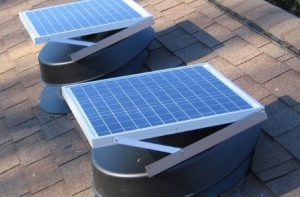
When you want to insulate your attic fan first, you have to take the measurements of the fan. Already having the flexible radiant barrier that is of the same wide as the fan, unroll the hook-and-loop fastener tape and do not separate the halves of the tape. Then press the sticky side of the tape against the surface of the attic fan and then pill back the paper facing the side of the tape.
Then unroll the insulator’s bolt and cut off the roll’s section that is large compared to the attic fan house, then cover the house and the fan with the insulation you had cut while separating the hook-and-loop fastener. Lay the insulation on the surface and press it back against your fan housing as you push the hook-and-loop fastener together. This is how you can successfully insulate your attic fan.
How to Replace It?
If you want to replace your attic fan, you have first to turn off the branch hence breaking the circuit on the service supplying panel to the attic ventilation fan. Then unscrew while holding the cover on the electrical connection box. Then remove the old ventilation fan from the place that is being mounted by removing the lug nuts holding it. Then place a new fan in the right position and fix it well with lag nuts. Lastly, insert the circuit cable and tighten well the clamping screws hence securing it in its right place. Then connect the circuit back to the fan motor. By going through these procedures, you would have replaced your attic fan properly.
Why and When to Use It?
If you are leaving is a house when you are encountering discomforts due to inappropriate circulation of fresh air, then you need an attic fan. An attic fan will help then to draw hot, humid air pushing it out of your attic. This is much of help to your ventilation system as high temperatures can be lowered by this device, giving you a comfortable place to live. You always have to use the attic fan when you have no other alternative in your house to provide cold fresh air.
What Are The Benefits Of An Attic Fan And Solar Fan?
They are installed with one purpose of exhausting hot, humid attic air and to draw in the cold fresh air inside the attic. This is so to reduce the load in your house cooling system and as well helps to cut the electric bills.
Are Attic Fans Worth It?
The answer to this question is yes! They are worth it. If you are surrounded by hot attic air, why should you be uncomfortable always? You need to go for an attic fan. This device is designed in a way that it can lower the temperatures around you by exhausting hot air from the attic and well replacing attic air with fresh cooler outdoor air. The temperatures in the attic space can reach up to 160 degrees F., and the outside temperatures are about 95 degrees F., and it will be necessary for you to have an attic fan in your home to bring cooler temperatures in your house.
What Size Of Attic Fan Do I Need?
The size of the attic fan to use will depend on how big is your attic space. A small attic will need one medium-sized attic fan to operate and as well depends on the environmental conditions of the place.
What Temperature Should An Attic Fan Get Set At?
Most of the attic fans operate with the help of the thermostat that tends to turn it on and off automatically depending on the surrounding temperature that the owner of the house feels comfortable with. It is mostly recommended by the manufacturers to set a temperature that is between between100 to 110 degrees Fahrenheit.
Mostly on hot air conditions, you have to consider high temperatures to keep the fan from extending the working period. You have to install a humidistat in humid places to enable the attic fan to operate as instructed by the settings done on it, and the attic fan will start working once the humid level is reached.
How Many Fans Do I Need?
If you own a multi-layered home, then definitely, you need to have two or three of the attic fans to operate. But for standard homes, one attic fan can operate comfortably and effectively. This will be able to meet the expectations of cooling your house.
How to Calculate CFM for an Attic Fan
When you want to calculate the CFM for an attic fan, you have to find first the volume of your house, which is the total volume occupied by the house. Then multiply the volume got by 30, which is approximated to be the air change within 2 minutes. Then find out the area measure of the attic air vents and get to know the whole house fan that requires ventilation. Then divide the results got by 60 minutes to get the cubic feet per minute, which is the CFM.
Is Solar or Electric Fan Better
All the attic fans work the same, but the difference comes in on how they operate and how fast it can cool your house. Generally, the electric attic fans are more efficient and powerful than the solar attic fans. The electric attic fans push more air out of the attic and draw cooler out air into the attic, but there is more cost you are going to accrue due to electric bills than the solar-powered ones. The solar attic fans strictly depend on the sun as a source of their energy, thus limiting them to operate during times when the sun is not shining. Also, the solar attic fans are more expensive to install than electric attic fans.

